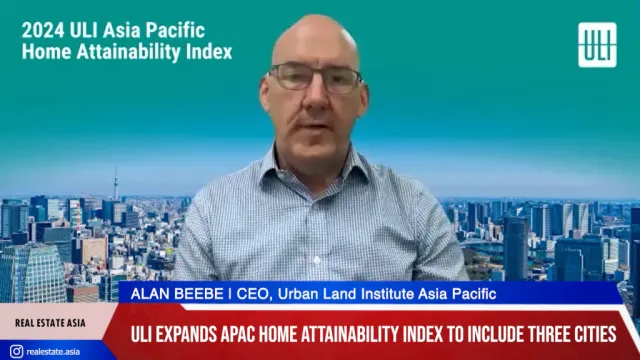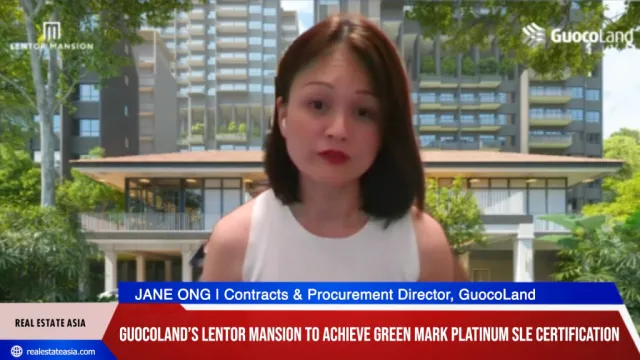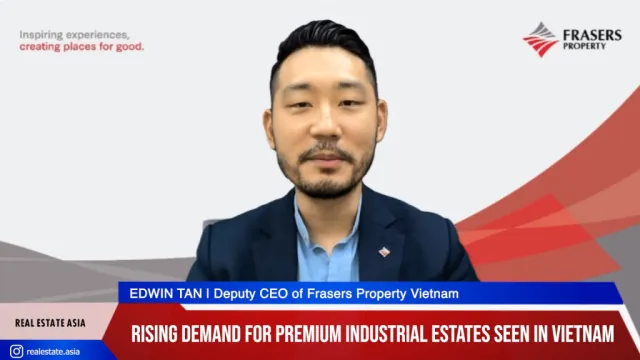Singapore
APAC commercial transactions slump to lowest levels in 8 years
Transactions were down 31% to US$134.6b in 2020, the lowest since 2012’s US$131b.
APAC commercial transactions slump to lowest levels in 8 years
Transactions were down 31% to US$134.6b in 2020, the lowest since 2012’s US$131b.
Landlords splurge on office renovations to coax tenants out of remote working
The shift to a hybrid work model is forcing landlords to upgrade office spaces.
Top tips for investors eyeing APAC markets in 2021
Grade A offices in Seoul, Taipei, Ho Chi Minh City and prime industrial spaces in Australia are top picks.
How APAC property companies are affected by rising social risks post-pandemic
The shift to online shopping will reduce demand for retail space, a credit negative as per Moody’s. Moody’s Investors Service says in a new report that the coronavirus pandemic is accelerating changes in consumer and worker preferences, with widespread implications for property companies in the region. “Before the pandemic, social risks such as health and safety were low for property companies,” says Stephanie Lau, a Moody’s Vice President and Senior Analyst. “The pandemic has brought these risks to the fore as employers and retailers adjust their physical spaces, processes and IT in response to changing behaviors and expectations, which means that property companies must also adjust.” As the shift to online shopping accelerates, retail space consolidation will reduce property companies’ revenue and cash-flow predictability, as well as increase their operating costs as they invest in IT to retain retail tenants and consumer foot traffic in their shopping malls. For instance, malls in Hong Kong SAR and other Asia Pacific cities have already launched mobile apps to expand their customer loyalty programs. Although the pandemic has raised the proportion of online shopping in certain Asian markets, in-person shopping will not disappear completely. For example, over 70% of surveyed consumers from Singapore and Hong Kong still value in-store shopping, well above the global average of 55%, according to a report by Adyen Singapore and the Centre of Economic and Business Research. As with retail, flexible work arrangements will likely reduce office rents and shorten lease durations as companies seek greater flexibility and adjust long-tenure leases. But population density, along with work cultures and IT infrastructure will affect the pace and degree to which employers and office property companies in Asia Pacific adapt to changing office needs. Subscribers can access the report “Real Estate – Asia Pacific: Pandemic accelerates changes in consumer and worker preferences, raising social risks” here.
3 reasons why concerns over Singapore's office market are misplaced
The work-from-home setup is not likely to significantly reduce demand. When COVID hit the world, the accompanying lockdowns brought the term Work(ing) From Home (WFH) from the margin to the mainstream. This sounded alarm bells around the world, from savvy investors like Warren Buffet to analysts and other market watchers, thinking that the age of the CBD office market is over. Those who believe that WFH will significantly reduce demand for office space have valid reasons but Savills notes that their concerns about demand have not been articulated considering the following: 1. The discrete nature of office leasing terms 2. Time domain 3. New demand By not accounting for these factors, any analysis of the market is likely to fall short of the mark. Savills analyzes the Singapore CBD Grade A Office market to look at how it may permutate over time after we adjoin these three extensions to the mainstream WFH belief that there will be a sharp climbdown in demand. From a list of permutations, Savills inputs their prior probabilities as to which of these are likely to play out in future. This approach is in sharp contrast to providing a singular outcome after just one round of reasoning. Here’s more from Savills: DISCRETE NATURE OF LEASING TERMS This is closely related to the time domain factor. This is because thus far, market observers are mentally forming beliefs which assume that WFH can be instantly mapped to reality. Unfortunately, as a typical office lease contract spans between three and (increasingly) five years, demand may remain relatively constant in the short to medium term. To get to the percentage of leases expiring this year and over the next two years, we looked at the leases expiring in terms of Net Lettable Area (NLA) from the five listed Singapore Commercial REITs CBD portfolios. Graph 1 shows the average leases expiring for the REITs (please note that this is a simple average and not weighted by NLA). For 2020, this is just 9.4% but rises to 24.7% by 2021 before falling to 15.6% in 2022. If we assume that the sample from the five commercial S-REITs listed here fairly represents the universe of CDB Grade A office space here, and if tenants upon lease renewal or expiry decide to reduce their CBD Grade A office footprint by 30%, this action alone will lead to the following increase in vacancy levels over the end-2019 occupancy of 4.4%. The cumulative increase in CBD Grade A vacancies for these three years is 14.9%. (These are just numbers calculated from existing tenants reducing their office space usage. We have not factored in new demand and office buildings taken off the market for redevelopment or retrofitting works.) Owing to the discrete nature of lease renewals, the increase in vacancy levels from 2020 to 2022 will be a series of small stepped down functions. That is, instead of the sudden drop in vacancies, the decline is more gradual (See Graph 3). In other words, because of the discrete length of lease terms, what tenants may wish for in terms of rightsizing their office footprint, cannot be carried out immediately. TIME DOMAIN If the sampled profile of lease renewals and the expected vacancy uplifts translate to our basket of CBD Grade A office buildings, then the much-dreaded contraction in demand would not happen overnight, but in phases. With this stretching of time, other factors come into play which may (or may not) be positive for the market and could (or not) mitigate, supplant or more than overcome the decline in the spatial needs of existing market tenants. There are a couple of points that we have to consider when we add time to the analysis. 1. By 2021, most sectors of the economy will have rebounded significantly on a quarter-on-quarter (QoQ) basis. 2. Landlords may take this opportunity when demand is weak to redevelop their buildings. 3. Physical completion of offices originally slated for 2021 and 2022 has been delayed for nine months due to the construction stop work orders. The final move-in date is prolonged as tenants are faced with further delays at the fit-out stage. All these factors work towards dissipating the negative forces acting on office demand. NEW DEMAND The WFH movement and reduced real business activity are likely to lead to a contraction of pre-COVID core office demand. However, the effects of the pandemic have not been uniform across all sectors. In Q2/2020, all sectors of the economy registered negative YoY growth, with the exception of the finance and insurance industry. International trading of equities, derivatives and other financial instruments have been rising during this period. Those departments within financial companies involved in such activities should at least sustain their current levels of office space usage. But moving forward, there could be growing demand from technology and social media related sectors. CONCLUSION The landscape of Singapore’s CBD office market is likely to change a fair bit in a world with COVID. However, don’t expect an overnight contraction in office demand because office lease expiries are phased out over time. When we factor in the possibility of landlords using the softer market conditions to redevelop their buildings, the delay in new supply caused by the construction stop work orders and the emergence of new demand drivers, the overall impact on the Singapore Grade A CBD offi ce market may not be as negative as some would have you believe.
Why investors are going gaga over multifamily real estate
Investors spent US$116 billion on multifamily assets in the first nine months of 2020. Real estate investors are increasingly hunting for multifamily real estate, a sign of the broader pivot toward defensive strategies amid ongoing economic uncertainty. Investment in all real estate sectors fell 44 percent in the third quarter of the year, compared to the same period in 2019, according to JLL. However, multifamily has fared better than most other sectors, with investment falling, but by 27 percent. Investors picked up US$116 billion of multifamily assets in the first nine months of this year. Multifamily offers investors “a view through and beyond COVID-19”, says Gemma Kendall, head of multifamily investment, EMEA Capital Markets at JLL. "Housing demand remains high in many cities around the world and supply has struggled to keep up. As a result, investors are viewing multifamily opportunities as more resilient than other asset classes." Even at the height of the pandemic, and with the introduction of rent controls in many major cities, there has been little evidence that rents are going unpaid. A recent JLL survey of institutional owners of residential assets found that rent collection stood at 95 percent in the U.K., and at 94 percent in the U.S. In Europe, multifamily investment is up five percent year-to-date. In Asia Pacific, multifamily and build-to-rent investment topped US$7.4 billion in the first nine months of this year, up 83 percent year-on-year. Demographic shifts and institutional support are driving demand for Asia Pacific’s multifamily sector, explains Regina Lim, head of capital markets research, Asia Pacific, JLL. "Fundraising among global investors will further accelerate, with the focus being on both traditional markets like Japan and emerging renting markets like China, Australia and Korea." Japan’s multifamily market, the second largest in the world behind the U.S., is increasingly in the spotlight with investment almost tripling in the first half of this year. In August, German institution Allianz Real Estate invested $160 million in a portfolio of 18 Japanese multifamily assets for its core Asia-Pacific fund, while Blackstone paid US$3 billion in February to repurchase a portfolio of 200 apartments in Osaka and Tokyo from Chinese insurer Anbang. Partnering up While COVID-19 has accelerated investment, the multifamily sector was already attracting global private equity, investment managers, insurers and sovereign wealth funds. In the past decade, multifamily deals as a proportion of global real estate investment have roughly doubled to 25 percent. As it became more mainstream, it started appealing to a broader range of investors. In the U.S., AIMCO this year agreed a 10-year joint venture with a passive institutional investor for a US$2.4 billion portfolio in California. AXA IM Real Assets recently completed a major transaction, buying Dolphin Square, in London. The growth of experienced players is essential if the market is to evolve sufficiently to meet increasing demand, with partnerships becoming a popular choice, says Kendall. "We’ve seen investors employ such strategies to find the expertise that they require in new geographies,” says Kendall. “It’s also a relatively granular sector; portfolio aggregation has been a strategy adopted by many but growing organically takes time." For several institutional groups, the best way to enter the market has been to team up with players who can develop, source transactions and partner on the operational side. Nuveen Real Estate recently joined forces with Iberian investment manager Kronos to develop a €1 billion build-to-rent portfolio of 5,000 homes in Spain.
Singapore office market still mired in uncertainties
CBD Grade A office rents may settle at a lower baseline, says Savills. Grade A CBD offices saw occupancy levels decline from 94.3% in Q2/2020 to 93% in Q3/2020 due in part to tenants giving up shadow space upon lease renewals or pre-termination arising out of business closures.
Non-landed private home prices in Singapore up 0.1% in Q3
The slight growth was driven by the price increases in RCR and OCR. Alongside surging transaction volumes, private home prices also defined the negative impact brought on by COVID-19. According to the URA’s latest statistics, the island-wide price index of non-landed private residential properties inched up by 0.1% QoQ in Q3/2020. By market segment, the overall price growth was fuelled by the rest of central region (RCR) and outside central region (OCR), which posted quarterly growth of 2.5% QoQ and 1.7% QoQ respectively. Relatively higher prices achieved in newly launched projects compared to the vicinity was the main reason behind the increase. In contrast, prices in the CCR experienced a contraction of 3.8% QoQ. Lower prices in resale transactions, together with limited new sales, could be blamed for the price drop in this market segment. The average prices of high-end non-landed private residential projects in Savills’ basket also fell in the reviewed quarter, though at a much moderate pace of 0.2% QoQ. Year-to-date, prices registered a marginal 0.9% decline. The decline should also be seen in the context of a limited number of transactions, inferring that the sellers in our basket of high end non-landed properties are not under great duress to offload their properties. Supply Based on the data released by the URA, there was a total supply of 50,369 uncompleted private residential units in the pipeline with planning approvals in Q3. About 52.6% of this pipeline supply, or 26,483 units remained unsold at the end of Q3/2020. This is about 5.3% lower than the 27,977 in the previous quarter.
Industrial strata sales volume in Singapore more than doubled to 372 in Q3
It’s a reversal from a four-quarter decline which began in Q3 2019. The uptick was mainly lifted by an uptick in strata sales for multiple-user factory and warehouse properties, such as Mega@Woodlands and Oxley Bizhub. The demand could have come from firms, particularly in printing as well as event organising, who are downsizing their real estate footprint. Furthermore, Savills notes that some companies in healthcare and the aquaculture industry (i.e. frozen seafood) are also looking to acquire larger facilities to support their business expansion as the pandemic has benefited them. Although there is a growing buying interest among automotive players, especially when there are more single-user factories up for sale, most of them did not translate to actual sales as the prospects are still waiting for better offers before the lease expiry of their current premises. Here’s more from Savills: While some owners maintained their price expectations, particularly for freehold assets, data from JTC showed that overall industrial prices fell by 2.2% QoQ in Q3, making it the largest decline in the last four consecutive quarters. Similarly, Savills’ basket of leasehold industrial properties also continued to register declining prices in Q3. Prices for 60-year leasehold properties fell at a moderate pace of 0.9% QoQ to S$425 per sq ft, while that for 30-year leasehold properties fell by 2.2% QoQ to S$301 per sq ft due to depleting lease terms. As there is a scarcity of freehold industrial stock available currently, especially in prime locations, freehold industrial prices held firm, recording a marginal rise of 0.2% QoQ to S$694 per sq ft.
How office space metrics will evolve post-COVID
New metrics like technology obsolescence and energy balance are emerging. For many companies reassessing their office space amid the rise of remote working, the focus on employee wellbeing and the need to reduce overheads, the old metrics they used to measure how well workplaces perform are no longer enough. Today, metrics that go beyond the traditional space per person or space per desk are being sought so companies can better understand and compare how different offices across a portfolio are really faring – and what needs to change to better position their real estate for the long road ahead.
How will Singapore's relaxed restrictions affect the property sector?
The workplace-related changes will boost demand for conference halls, convention centres as well as CBD/Orchard Road retail.
6 COVID-inspired changes developers are mulling over
Over four in 10 developers are changing designs that were once considered complete.
What's driving the growth of the logistics sector in APAC?
The e-commerce boom is one of the major growth drivers.
APAC real estate investment volumes record softest quarter since 2016
The overall regional volume declined by almost 40% in Q1 2020 at US$117bn.
What ghost month? Singapore new home sales up 16.3% to 1,256 units in August
Sales from the Rest of Central Region and Outside Central Region continued to dominate this month. Since the opening of showflats from 19 June onwards, Knight Frank notes new sales volume in the private residential market has been steadily increasing each month fuelled by pent-up demand. From 998 units (excluding Executive Condominiums (ECs)) in June, to 1,080 units in July, new homes sales in August totalled 1,256 units, an increase of 16.3% from July and 353.4% from the 277 developer sales in April, which accounted for the lowest monthly volume in 2020 due to the start of the circuit breaker (CB). New home sales in August 2020 was also 11.8% higher than the 1,123 monthly sales in August 2019, and just shy of the highest monthly volume last year comprising 1,270 units in September 2019. Leonard Tay, Head, Research, Knight Frank Singapore, says the Hungry Ghost month did nothing to halt the gaining momentum from “needs-based” purchasers who sold their properties and are now in need of a new home and those getting married. Other buyers whose jobs are not at risk and have substantial savings, could have also purchased a new home for fear of missing out. HDB homeowners who have recently completed their five-year Minimum Occupation Period (MOP) in BTO Flats, could have sold their units and used the gains to upgrade to new condominiums. Here’s more from Knight Frank: Sales from the Rest of Central Region (RCR) and Outside Central Region (OCR) continued to dominate in August with 622 sales and 506 sales respectively, as both new and previously launched projects posted brisk sales. New sales were bolstered by the newly launched project Forett At Bukit Timah in the RCR. One of the first large-scale developments to be launched after the lifting of the CB measures, the 633-unit freehold development in District 21 was the top selling project with 213 units or 34% of the project snapped up during August, attesting to the pent-up demand still evident in the market. Sales have also picked up in earlier launches like The Garden Residences in the OCR and The Woodleigh Residences in the RCR, both of which overtook Jadescape to be among the top five best-selling projects in August. The freehold development Noma, which launched at end-August in the RCR, moved 34 units this month at a median price of S$1,639 psf. Even with buyers’ attention turned towards the RCR and OCR, developer sales in the CCR saw its third consecutive month of uptick. New launches in the CCR included the boutique project Mooi Residences (July 27), which sold its first three units at a median price of S$2,566 all to Singaporean buyers. There were 1,582 units launched in August, almost twice the 869 units launched in July, and more developers will gear up to launch their projects in the remaining months of 2020. Even though new sales volume in the private residential market has been strong in the few months after the circuit breaker, sales momentum for the rest of 2020 might stabilise in the remaining months of 2020. Year 2020 could now end with about 7,000 to 8,000 new home sales in the private market. This is higher than Knight Frank’s previous estimated projection of 6,000 to 7,000 new sales made during the circuit breaker.
APAC office investment transactions show 'encouraging signs' amidst the pandemic
The USD11.7b worth of transaction volumes in Q2 reflect fundamental strengths in some APAC markets.
Singapore, Bangalore, Melbourne to lead office rental recovery in APAC
Rents are expected to grow by between 3.3% and 2.2% on average per annum for the next five years.



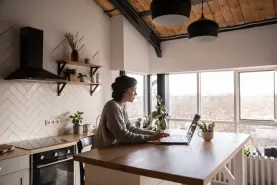
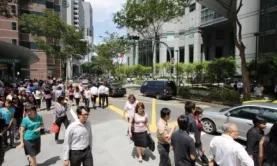


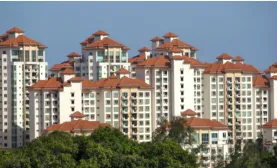
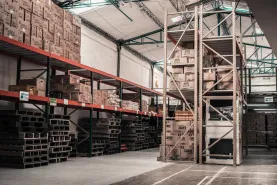
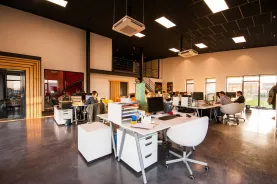






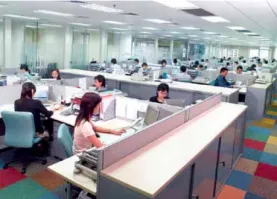
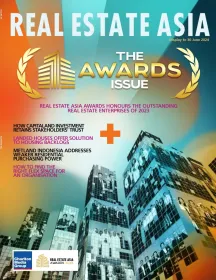
 Advertise
Advertise




